Saving Belize’s Scarlet Macaws: Into the Wild (Part One)
The Scarlet Macaw is one of Belize’s most striking birds, but its brilliant red, yellow, and blue feathers, along with its loud calls, make it an easy target for poachers.
Deep in the Chiquibul Forest, the Friends for Conservation and Development (FCD) continues its mission to protect these rare birds, giving them a fighting chance to survive in the wild.
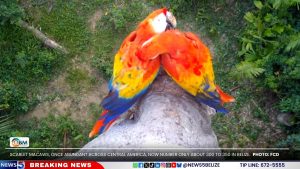
Saving Belize’s Scarlet Macaws: Into the Wild (Part One)
High above the emerald canopy, flashes of crimson wings cut through the sky.
Scarlet macaws, once abundant across Central America, now number only about 300 to 350 in Belize. They are largely confined to the wild corridors of the Chiquibul and the riparian forests that line its rivers.
Along a riverbank, one macaw peeks from a cavity inside a quamwood tree, a nesting site critical to the bird’s survival.
Biodiversity researcher Wilmer Guerra explained that “about 90% of their nests are around this river. They nest in the riparian zone. So they find these quamwood trees, which are softwood trees. They would find a cavity that’s very small, and then they would go in, and using their claws, they would scratch the walls of the cavity to create chippings for the chicks.”
According to FCD’s Executive Director, Rafael Manzanero, the Scarlet Macaws in Belize represent a rare subspecies. “Here in Belize, they’re still on their red list in terms of the poor and low numbers that we still have in the country. We spend basically seven months doing biomonitoring and doing other programmes in terms of protecting the species. So it takes a lot of commitment, it takes a lot of skills, and more importantly, a lot of experience in order to do this kind of work.”
That commitment includes scaling towering quamwood trees to protect fragile eggs, no larger than a clenched fist. Rangers spend two-week shifts in the forest, climbing trees with safety gear and ropes to monitor nests. Chief researcher Eric Max noted, “The climbing demands a lot of physical fitness because some of the trees are high. Like today, he climbed; this one is not really high, but it does demand a lot of physical fitness.”
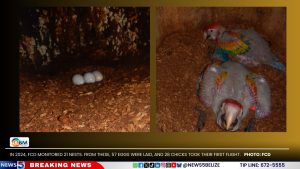
In 2024, FCD monitored 21 nests. From these, 57 eggs were laid, and 28 chicks took their first flight. Chicks that were too weak, or whose nests had collapsed during storms, were brought to a field laboratory where they were hand-fed, nurtured, and later returned to the forest.
“It’s a non-invasive job, so we don’t touch the macaws,” Max said. “We just normally look at them and see what they’re doing, how they’re growing. We see their feathers. We see inside the cavity condition what it’s like if it’s not vulnerable to, like, rain and predators and stuff like that.”
But the macaws’ beauty also puts them in danger. Guerra explained how their bright colours and loud calls make them easy to spot. “If they’re inside the nest, the first thing that they would do is they would poke their head out, and they’re very bright red. So it’s easy for you to spot them, and then they start to vocalise. So even if you’re far away, you would be able to hear them. And so for a poacher, that’s something that’s really good for him.”
To keep the birds safe, some chicks are removed from high-risk areas and raised at the research station. Recently, 12 were released back into the Chiquibul.
Guerra explained, “They are between a hundred and a hundred and twenty days old, which is when we know is the age we need to release them. Some of them are rescued from areas that we know are areas to be poached. So before the poachers get to them, we extract them, and then we bring them to the lab, and following a lot of protocols, we raise them and then release them into the wild.”
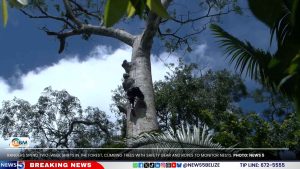
Saving Belize’s Scarlet Macaws: Into the Wild (Part One)
The work has yielded promising results. Manzanero said, “We have seen around 2008; we had up to 86% of the eggs that were being lost as a result of poaching or the chicks. So that has decreased to zero over the last four years. In these zones here. So, it has taken a lot of work; it has taken bi-national arrangements with Guatemalans. We have also been able to put anti-poaching activities in place for that. And so over the years this has been reduced, but it took us, goodness, some 10 years really to reduce that.”
After a decade of relentless protection, Belize’s Scarlet Macaw population has risen from just over 200 to between 300 and 350 today. For FCD, it is proof that their efforts are helping secure a future for one of Belize’s most treasured birds.




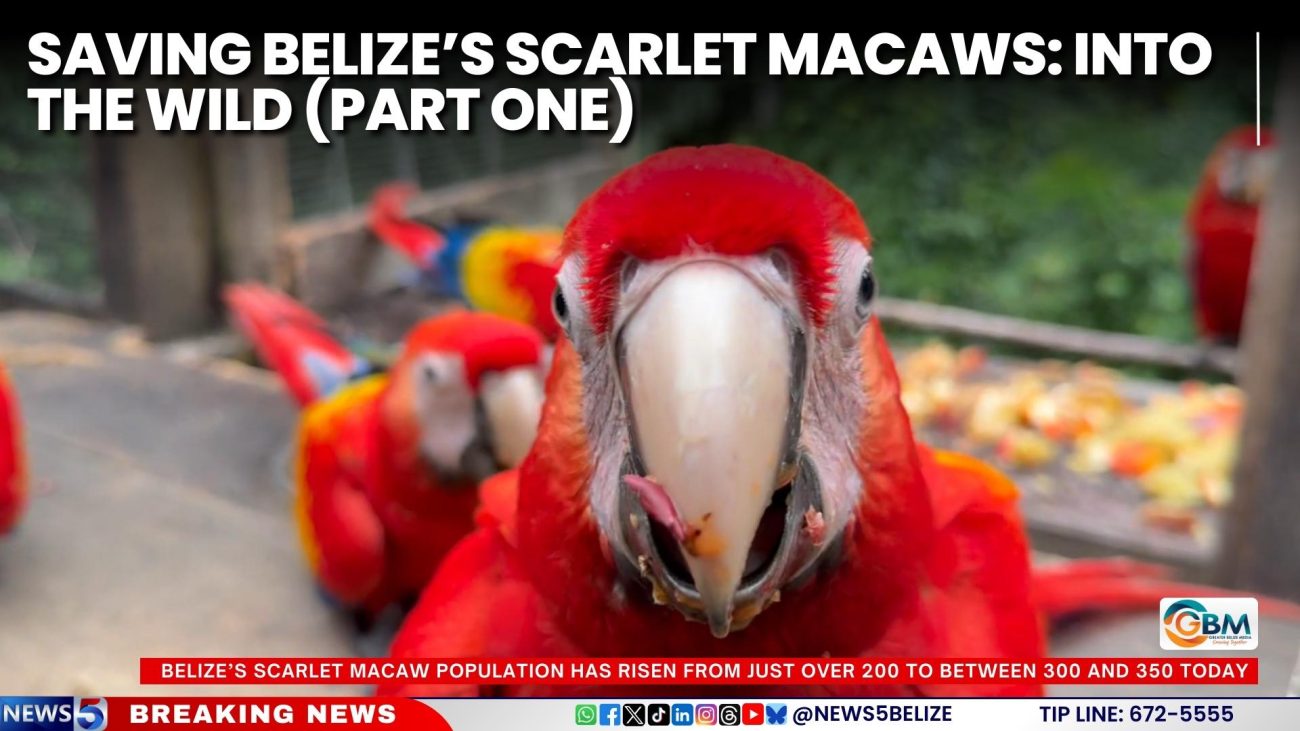
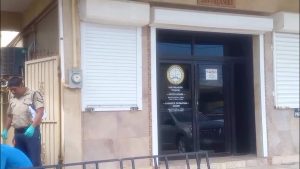
Facebook Comments